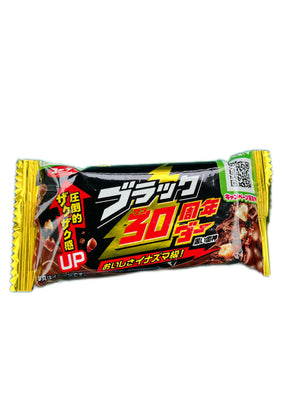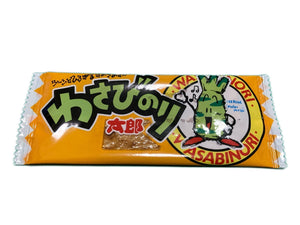
What is Ensoku?
In Japan, schools organize ensoku (school excursions) once or twice a year. These are day trips where children visit nature spots, historical sites, or museums. It’s not just an educational activity—ensoku is a fun event where students bond with their classmates and teachers in a different setting.
One of the most anticipated parts of these excursions is oyatsu time (snack time). However, there’s a catch—students are given a limited budget for snacks, usually around 200 to 300 yen (about $1.50 to $2.00). This rule encourages kids to think carefully about what snacks to buy in order to get the most enjoyment out of their limited budget.
It’s during these times that snacks like Taratarashitenjane-yo often make an appearance.

What is Taratarashitenjane-yo?
Taratarashitenjane-yo is a fish-based snack produced by Yocchan Food Industries. Made primarily from Alaska pollock and flavored with soy sauce, doubanjiang (a spicy Chinese soybean paste), and a touch of sweetness, this snack has a unique taste that leaves a lasting impression.
The snack is processed into thin sheets with a chewy texture, similar to dried squid. As you chew, the flavor deepens, making each bite more satisfying than the last. Even with a small amount, the texture and taste make it feel like a substantial snack—perfect for those times when you want to feel full on a limited budget.

From a School Snack to an Adult Favorite
Many Japanese people remember Taratarashitenjane-yo as a go-to snack for school trips and picnics. Its slightly spicy flavor made it feel like a more “grown-up” snack, something kids could brag about to their friends.
Nowadays, Taratarashitenjane-yo has also gained popularity among adults. You can often find it at bars and izakayas (Japanese pubs) as a side dish or snack to accompany drinks. Its combination of soy sauce and spicy doubanjiang pairs especially well with beer and other alcoholic beverages. Even if you’re not much of a drinker, the snack’s unique flavor is worth trying!

A Note on Nutrition and Health
One pack of Taratarashitenjane-yo (12g) has about 37 kcal, making it a low-calorie snack. However, it does contain a fair amount of salt and food additives, so it’s best enjoyed in moderation. Small children, in particular, may find the saltiness and spiciness a bit overwhelming, so it’s advisable to limit the quantity and serve it alongside milder snacks.

Final Thoughts: Enjoying a Taste of Japan’s Nostalgia
Taratarashitenjane-yo is more than just a snack—it’s a symbol of Japan’s ensoku culture and holds a special place in many people’s childhood memories. Even as an adult, its taste and texture remain unchanged, bringing a sense of nostalgia and new discoveries.
In the upcoming OYATSU CLUB JAPAN MISTERY TOUR, we’re considering including snacks like Taratarashitenjane-yo to offer a taste of Japanese nostalgia. It’s exciting to think about how these familiar treats might be received by people outside Japan, and I look forward to seeing how they’ll be enjoyed worldwide.
| Item | Details |
|---|---|
| Product Name | Taratarashitenjane-yo |
| Manufacturer | Yocchan Food Industries |
| Ingredients | Fish paste, starch (corn, wheat), doubanjiang (spicy Chinese bean paste), fermented seasoning, hydrolyzed protein, salt, soy sauce, bonito extract, plant protein, sugar, vegetable oil (palm oil), chili pepper, sorbitol, seasonings (amino acids), pH adjuster, alcohol |
| Net Weight | 12g |
| Calories | 37 kcal (per 12g pack) |
| Protein | 1.8g |
| Fat | 0.4g |
| Carbohydrates | 5.6g |
| Sodium | 0.9g |
| Allergen Information | Contains wheat, soy, gelatin |
| Storage Instructions | Store at room temperature, avoiding direct sunlight and high humidity |
| Expiration Date | 180 days from production |
| Caution | Manufactured in a facility that also processes squid |
| Additional Information | Fish used in the product have consumed shrimp and crab |




